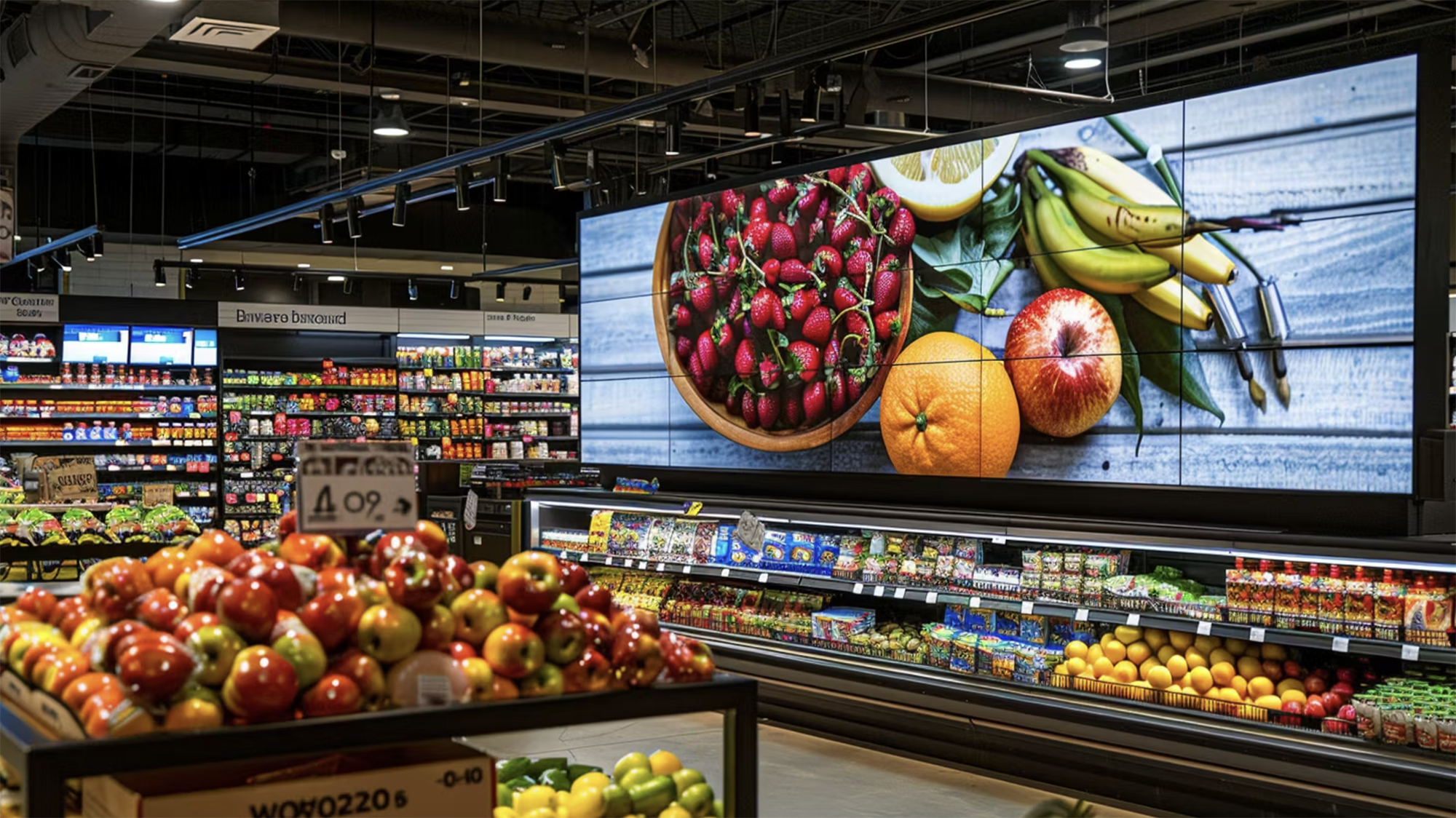AI-Powered Personalization: Unlocking the Potential of Omnichannel Sales

At a Glance
- Grocery Doppio hosted an "AI in Grocery" virtual Event with esteemed industry speakers
- The session was insightful and discussed on the the shifting landscape from the traditional ecosystem to the digital ecosystem and increasing expectations of shoppers
- Use cases of Personalization to include product recommendations, search and substitutions to improvise customer experiences and boost incremental sales
- Discussion was led by our expert panelists, Gaurav Pant(Grocery Doppio), Doug Baker(FMI), Barry Clogan(WynShop)and Charles McWeeney (Wakefern Food Corp)
The Grocery Doppio AI in Grocery event explored the immense transformative impact of AI in the grocery industry.
With a projected value of $113 billion encompassing opex and top-line growth, AI presents a tremendous opportunity for grocers. According to Grocery Doppio research, although digital sales make up just 13% of overall grocery sales, a remarkable 69% of grocery sales are influenced by digital channels. With this vast potential, it becomes essential for grocers to personalize the shopping experience to best connect with and convert digital shoppers into digital buyers.
At the AI in Grocery event, Grocery Doppio hosted a panel of industry leaders including Doug Baker, VP, industry relations, FMI; Charles McWeeney, VP of technology, innovation, and strategy, Wakefern Food Corp; and Barry Clogan, chief evangelist, Wynshop who explored various aspects of personalization and its implications for the future of grocery.
Insights from Industry Leaders
Personalization has become a paramount expectation for customers in today's rapidly evolving retail landscape. While the concept itself is not new, recent macroeconomic events and the widespread adoption of artificial intelligence have propelled the omnichannel experience to new heights.
Customers expect to find exactly what they want, precisely where and when they want it. The traditional linear shopping path has given way to a dynamic digital ecosystem that offers personalized search recommendations and substitutions. As shoppers become more discerning and value-driven, personalization plays a crucial role in brand engagement and driving purchases, particularly for private-label brands. Moreover, with a diverse demographic ranging from the silent generation to the digitally native centennials, personalization has become an all-encompassing principle shaping the retail experience.
Below, are some quick insights shared by the panelists in their deep-dive discussion.
McWeeney highlighted the grocery industry's transition from traditional approaches to digital ecosystems. Retailers can capitalize on technologies like electronic shelf labels, NFC, and QR code scanning to enhance customer connections and expand their online presence while engaging customers to discover a new and diverse range of products.
Customers who typically avoid online shopping can be enticed to explore digital platforms through mobile apps, providing access to valuable information and immersive experiences. He also emphasizes the significance of new and impulse purchases and the role of substitutions in enriching the customer journey. Facilitating the exploration of new products through online channels becomes crucial, especially given the reduced opportunities for in-store interactions with associates.
Baker provided valuable insights into the importance of personalization within the context of private brands. He discussed the emergence of digital consumer cohort's millennials and centennials who are brand aware and value conscious, have individual requirements, and are open to purchasing private brands. He emphasizes the need to meet customers where they are and cater to their preferences. In the past, private labels faced challenges in terms of price competitiveness, hindering their growth and quality. However, they have now experienced significant expansion and loyalty, especially among millennials and centennials, through value enhancement.
The Role of AI in Personalization
The panelists dove into the advantages of AI-powered personalization, and how best to meet the individual consumer.
McWheeny highlighted that AI's influence extends beyond digital productivity, encompassing store operations. AI aids in forecasting, planning, testing, learning, and pricing models, enabling grocers to generate accurate predictions about customer preferences and demand.
According to Baker, data availability is not an issue; leveraging AI effectively to unlock insights requires time, tools, and the involvement of human expertise.
AI for Everyone
The adoption of AI technology presents significant opportunities for small grocers. By leveraging AI in their operations, small grocers can enhance various aspects of their business, including inventory management, customer service, and personalized marketing. The panel addressed the concerns of small grocers and the feasibility of AI adoption.
Clogan emphasized the importance of establishing a clear data strategy as a foundational step for small grocers to harness the benefits of AI. This includes ensuring clean and normalized data, particularly in pricing and loyalty. He also highlighted the need to revisit and redesign the operating model to align with digital use cases, enabling a clear understanding of the work to be done and its value. By leveraging loyalty data, grocers can guide shoppers to explore other offerings within their private brand portfolio, enhancing the customer experience and driving brand loyalty.
90-Day Action Plan
Each panelist was asked what grocers can do over the next 90 days to up their personalization prowess.
Baker emphasized the importance of interoperability and data accuracy as parallel priorities. For personalization in the grocery industry, improving search optimization and providing a seamless omnichannel experience while staying agile in the face of digital advancements is paramount.
McWeeney suggested that grocers identify solvable problems, seek feasible solutions, and iterate over time.
Clogan mentioned reassessing the operating model and redesigning it with a strong digital focus. Placing the customer at the center of this process means considering their needs across all digital touchpoints rather than solely focusing on in-store or online experiences. By adopting this approach, grocers can effectively align their operations to meet customer expectations in the digital realm.
As the grocery landscape continues to evolve, staying attuned to customer demands and embracing technological advancements will be crucial for grocers to thrive.


.png)





.png)


